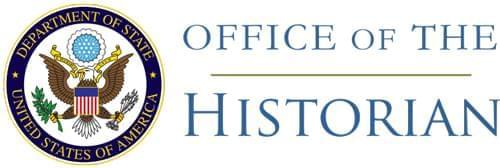Memorandum from the Chief of Staff, November 7, 1945, in reply to
our Memorandum to the Supreme Commander of November 6, 1945;
Memorandum to the Supreme Commander, November 12, 1945, listing
the thirteen names mentioned above, with brief biographical
data.
The thirteen names in question were taken from the War Crimes
Office lists prepared with the Department’s assistance.81 We are
proceeding, on the basis of those lists, to draw up further
lists for submission to General MacArthur. We understand that,
as a result of our memorandum of November 6, he has instructed
the Counter Intelligence Section of General Headquarters to
prepare lists of suspects who should be arrested at this time,
and we accordingly may expect that some action will be taken in
the matter.
[Enclosure 2]
Memorandum by the Acting Political Adviser
in Japan (Atcheson)
Tokyo, November 12,
1945.
Memorandum for: Supreme Commander and
Chief of Staff.
Reference your memorandum of November 7, 1945, suggesting
that we list major Japanese war criminals suspects who, in
our opinion, should be arrested at this time.
Enclosed is a list containing thirteen names of such major
war criminal suspects, together with biographic data
concerning each, which we consider sufficient evidence to
support their arrest for trial under Section II, Article 6
(a), of the Four Power Agreement
on War Crimes Trials:
“(a) Crimes against peace:
Namely, planning, preparation, initiation or waging
of a war of aggression, or a war in violation of
international treaties, agreements or assurances, or
participation in a common plan or conspiracy for the
accomplishment of any of the foregoing.”
Some of the persons listed are, of course,
also guilty of war crimes (violations of the laws or customs
of war) as defined in Section II (b)
of the Agreement in question. These persons are believed,
with others, to have been responsible through the policies
which they advocated and the influence which they exerted
for the initiation and carrying on of the attacks launched
by Japan on Manchuria in 1931,83 and on
[Page 964]
China proper in 1937,84 and on the United States, Great Britain and
others of our Allies in 1941.85
The list specifies only thirteen of the more than fifty major
suspects listed by the State, War and Navy Departments.
Subsequent lists of persons believed to share responsibility
with those named and of persons considered responsible for
specific violations of laws or customs of war will be
submitted to you in due course.
[Subenclosure]
List of Major Japanese War
Criminals
Araki, Sadao, Baron and General
(retired). Education Minister 1938–39, completely reforming
educational system along ultranationalistic lines. Super
militarist. Powerful in military circles. Reported an
important influence behind Tojo. An ardent nationalist. Born
1877. Address: 63 Hatagaya Hon-Machi, 1–Chome, Shibuya-Ku,
Tokyo.
Honjo, Shigeru, Baron and General.
Commanding Officer, Kwantung Army 1931–35. Believed to have
conceived and executed Mukden Incident without reference to
Tokyo. Privy Councillor. Adviser, New Asia Movement of
Imperial Rule Assistance Association, 1944. Has been termed
“ring-leader of the Japanese war lords.” Born 1876. Address:
8 Henchara, Nakano-Ku, Tokyo.
Itagaki, Seishiro, General.
Commander-in-Chief Korea 1941–45. War Minister 1938. A
leader of the so-called “Young Officers group. Took major
part in the Manchurian Incident of 1931. Close friend of
Tojo. Commanding Officer Singapore 1945. Reported a Black
Dragon.86 Born
1885.
Kanokogi, Kazunobu, Black Dragon.
Councillor of Imperial Rule Assistance Association.
Chairman, Board of Directors of Press Patriotic Association,
1942. Long involved in secret society and nationalistic
activities. Reported close associate of Mitsuru Toyama. Born
1884. Address: 617, Jomyo Ji, Kamakura.
Koiso, Kuniaki, General. Premier
of Japan 1944. An ardent imperialist, one of most
enthusiastic proponents of Japanese expansion, both on
continent and in South Seas. Former Chief of Staff of
Kwantung Army 1932–35, and a leader in Manchurian
[Page 965]
occupation.
Governor General of Korea 1942, where known as “The Tiger.”
Born March 1880. Address: 271–Chome, Morimoto-Cho, Azabu-Ku,
Tokyo.
Kuhara, Funanosuke. Prominent
politician, industrialist. Close friend and supporter of
Baron Tanaka,87 General Araki. Advocate of strong policy
toward China. Involved in Incident of; February 26,
1936.88 Ardent nationalist, closely associated with
military circles and aims.
Kuzuu, Yoshihisa. Head of Black
Dragons since 1937. Director, Imperial Rule Assistance
Association 1944. Reported right hand man of Mitsuru
Toyama.
Matsuoka, Yosuke. Foreign Minister
and a leading expansionist in 1941. The Tripartite Axis Pact
was signed shortly after he became Foreign Minister in
1940.89 Anti-American. Popular with Army and
patriotic societies. Born 1880. Address: 381, Sendagaya,
2–Chome, Shibuya-Ku, Tokyo.
Matsui, Iwane, General (retired).
Leading Army extremist. In command during rape of Nanking,
bombing of Panay, and attempted
bombing of British gunboat and shelling of HMS Ladybird.90 Long active exponent of “Asia for the
Asiatics,” “Japan’s Divine Mission.” Director General, Great
East Asia Headquarters of Imperial Rule Assistance
Association 1944. President, Great Japan New Asia Society
1945. Born 1878.
Mazaki, Jinzaburo, General. Army
extremist, close associate of Koiso, Araki. Leader of “Young
Officers”, reported to have inspired Young Officers
Revolt,91 their candidate for Premier. Inspector
General, Military Education 1934–38. Member, Supreme War
Council 1936. Military Adviser to Japanese Expeditionary
Forces in China 1944. Born 1876.
Minami, Jiro, General. Privy
Councillor. Oppressive rule as Governor General of Korea
193–42. President, Political Association of Greater Japan,
March 1945. War Minister during the Manchurian Incident in
1931. Prominent member Army clique. Born August 1874.
Shiratori, Toshio. Foreign Office
Adviser, Koiso Cabinet, also in 1940 and 1941. An ardent
nationalist. Has been described as
[Page 966]
“the most rabid of all the
militarists.” Declared to press in March 1941 that Japan’s
true aim was to drive the white race out of Asia.
Yamada, Otozo, General. Ardent
expansionist. Close associate Doihara,92 Sugiyama,93
Tojo. Commanding General, Kwantung Army 1944–45. Inspector
General, Military Education and Supreme War Councillor
1939–44. Commanding General, General Defense Headquarters
1941. Reported favorable Young Officers clique. Top policy
maker.
